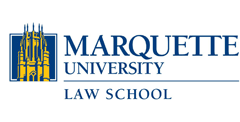Document Type
Article
Publication Date
2016
Publication Information
Bruce E. Boyden, Emergent Works, 39 Colum. J.L. & Arts 377 (2016)
Source Publication
39 Columbia Journal of Law & the Arts 377 (2016)
Abstract
We are on the cusp of a significant transformation in how creative works are produced. Automated programs can now generate music, write poetry, pen news reports, create videos, and more. These computer-generated works pose a problem for copyright law, which has only rarely had to address a situation in which creative elements are produced without conscious decisions. The question of who authors such works, and thus has the initial rights to them, will become more pressing as computer programs not only improve their artistic mimicry, but become commercially successful at doing so.
In this Essay I draw three conclusions. First, although there have long been difficulties in copyright law in identifying authors and authorship, computer-generated works represent a novel and growing problem that seriously challenges existing doctrinal categories. Second, the problem of computer-generated works is not a single problem, but rather a set of related problems, some of which are easier than others to resolve. The most difficult involve what I call “emergent works”—works of apparently creative expression that arise from the operation of a program but cannot be traced directly to a human source. Third, after considering the class of computer-generated works, I identify a potential criterion for whether a person should be deemed the author of a given work: whether that person could predict the work’s content with reasonable specificity before it is rendered or received by the user. In other words, the would-be author should have to establish what copyright law has demanded for more than a century, that the work was the product of his or her imagination and conception of it.
Repository Citation
Boyden, Bruce E., "Emergent Works" (2016). Faculty Publications. 719.
https://scholarship.law.marquette.edu/facpub/719
